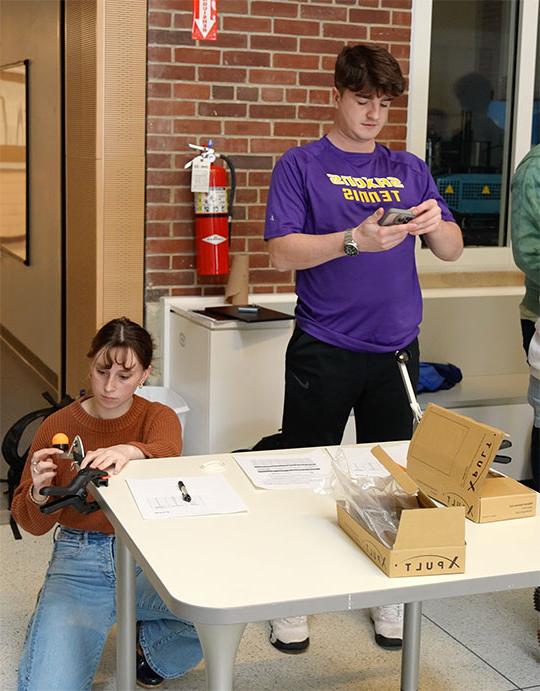Alfred University engineering students innovate with design of experiments using catapults

Students in Alfred University’s engineering statistics class recently explored the power of Design of Experiments (DOE) through a hands-on activity involving small catapults.
DOE is a systematic method used by engineers and scientists to understand how different factors influence an outcome of an experiment or process design change. By carefully designing and analyzing experiments, this approach helps optimize processes, solve problems, and innovate effectively.
The class focused on a simple but engaging project: launching objects with miniature catapults. Students adjusted three key parameters—such as the angle of launch, the tension in the elastic band, and the position of the projectile on the launcher—each set to two levels, such as "high" and "low." This "three-factor, two-level design" allowed them to systematically explore how combinations of these variables affected the flight distance. The experiments were conducted in the courtyard of McMahon Engineering Building.
Through this process, students not only learned how to collect and analyze data but also how to identify which factors had the most significant impact on performance. This hands-on experiment brought to life the principles of DOE, showing its applications in everything from manufacturing to product development.
This activity reflects Alfred University’s commitment to experiential learning, preparing students to tackle real-world engineering challenges with creativity and precision.
